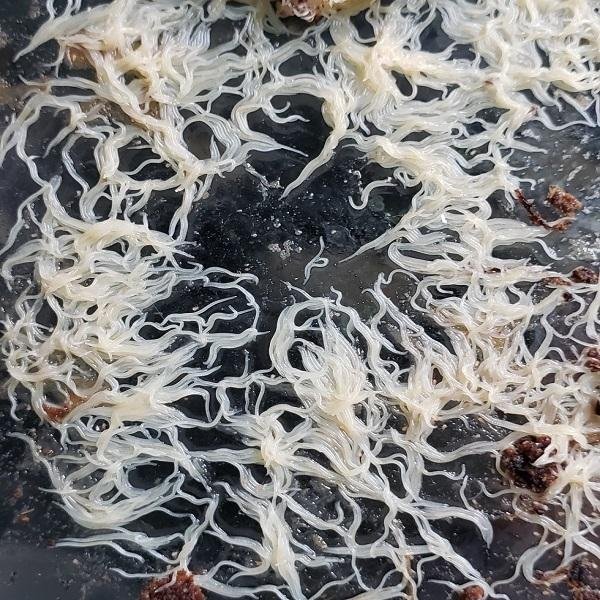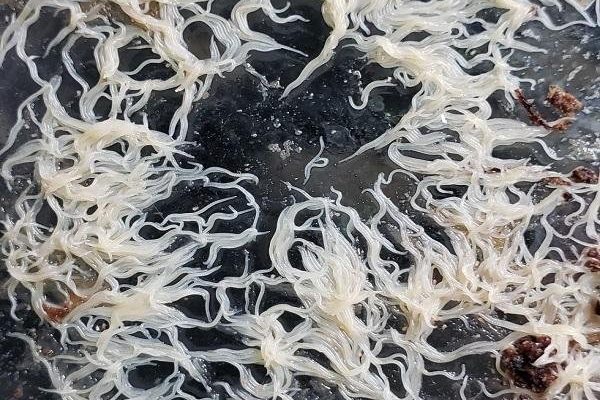
Grindal worms (Enchytraeus buchholzi) are tiny white worms that live in soil and decaying organic matter. They’re favored by fish enthusiasts for their rich nutritional profile, serving as a fantastic live food source for fry and other fish. But how do you spot them in their natural setting? It’s easier than you might think. In this guide, we’ll explore the ins and outs of finding these little critters and what to look for.
Understanding Grindal Worms
Grindal worms are not just any worms; they’re part of the Enchytraeidae family, which is closely related to earthworms. Instead of digging deep into the soil like their bigger cousins, Grindal worms prefer the top layers where moisture and organic matter abound. They thrive in damp environments like compost heaps, garden beds, or even under leaf litter.
You might be wondering what they look like. Grindal worms are usually about 1 to 4 cm long, and they have a very faint white or cream color. Their size and color make them blend into their surroundings quite effectively, which sometimes makes spotting them a bit tricky. They tend to wriggle around when disturbed, so you’ll often notice them moving when you dig a bit in their habitat.
Their bodies are segmented, and if you look closely, you might see tiny bristles along their sides. These bristles help them move through the soil and can differentiate them from other worm species you might encounter. Knowing these details gives you an edge in identifying them when you’re out exploring.
Where To Find Grindal Worms
Now that you understand what Grindal worms are, let’s talk about where you can find them. They’re often located in moist environments rich in organic matter. This makes gardens, compost bins, and damp forest floors prime spots for your little hunt.
Here are some specific places to consider:
- Compost heaps: As worms thrive in decaying organic matter, compost is a hotspot for Grindal worms. Just gently sift through the top layers, and you’ll likely find them wriggling around.
- Flowerbeds: If you have a garden, take a look at the soil near plants that receive regular watering. The moist soil is often teeming with these tiny worms.
- Leaf litter: In wooded areas, lift some decaying leaves. Grindal worms love to hide there, munching on organic debris.
When you venture out, make sure to bring a small container to collect any worms you do find. It’s a simple yet effective way to ensure you can observe or use them later. Just be careful not to over-collect and always check local regulations regarding wild harvesting.
Identifying Grindal Worms in Their Habitat
When searching for Grindal worms, you’ll want to pay close attention to the environmental conditions around you. Since they thrive in specific spots, knowing what to look for can be a game changer. Here are a few key indicators:
1. Moisture Level: Grindal worms require damp conditions, so if the soil feels moist, you’re in the right spot.
2. Organic Matter: Look for soil rich in compost or decaying leaves. If you see this, worms are likely nearby.
3. Movement: When you disturb the soil, watch for small, wriggling movements. If you see quick, tiny motions, you’ve probably found Grindal worms.
Let me explain a bit more. If you’re gently digging through damp soil and notice a lot of small, white wrigglers appearing, it’s almost a guarantee that you’re looking at Grindal worms. They don’t dig down deep, so you’re more likely to find them as you skim through the surface layers.
If you see larger, thicker worms, you’re likely encountering other species, possibly red wigglers or nightcrawlers. Remember, Grindal worms are notably smaller and have a more delicate appearance.
Harvesting Grindal Worms Safely
So, you’ve found some Grindal worms! What’s next? You’ll want to harvest them carefully to ensure you don’t destroy their habitat. Here’s how to do it in a sustainable manner:
1. Use a Spoon or Small Trowel: Gently scoop up the top layer of soil along with the worms. This minimizes disruption to their habitat.
2. Collect with Care: Aim to take only a small portion from any one area. This way, you’re not wiping out the population in that spot.
3. Transport to a Container: Place them in a small, breathable container, perhaps filled with some of the soil you collected. This keeps them safe during your journey home.
4. Create a Temporary Environment: If you plan to keep them for fish food, make sure to prepare a suitable habitat in a container at home. Use moist soil and keep it dark and damp.
By following these steps, you can harvest them responsibly and ensure they continue thriving in their natural environment.
Benefits of Using Grindal Worms as Fish Food
You might be curious why Grindal worms are such a popular choice among fishkeepers. Here’s the thing: these worms are incredibly nutritious, making them an excellent addition to your fish’s diet.
They’re rich in protein, essential fatty acids, and vitamins. Smaller fish and fry particularly benefit from this balanced diet. Additionally, Grindal worms are soft-bodied, making them easy for tiny fish to digest. This can lead to healthier, faster-growing fish.
Moreover, using live food like Grindal worms encourages natural hunting behaviors in fish, which helps keep them active and engaged. It’s a great way to enrich their environment and make feeding time more exciting for both you and your fish.
A little story for you: I recently started a small tank of betta fish, and I decided to introduce Grindal worms into their diet. The tiny fish were immediately curious, darting around as they spotted the worms wriggling in the water. It was such a joy to see them engage with their food!
Tips for Cultivating Grindal Worms at Home
If you’ve decided to keep Grindal worms, you might want to cultivate them at home. It’s relatively easy and can be rewarding, ensuring a steady supply for your fish. Here’s how to get started:
1. Set Up a Suitable Container: A small plastic bin with holes for ventilation works well. Fill it with a mix of moist soil and organic matter.
2. Maintain Moisture: Keep the soil damp but not soaking wet, as this is crucial for the worms to thrive. You can mist the container once in a while.
3. Feed Them: Add some dry oatmeal, bread crumbs, or crushed leaves every few days to keep them well-fed. They’re not picky eaters, which is a plus!
4. Harvest Regularly: Gently scoop some worms when needed, always leaving enough behind to maintain the population.
By following these steps, you can create a small ecosystem that supports your Grindal worms. It’s a fun little project that can enhance your overall fishkeeping experience.
Final Thoughts on Finding Grindal Worms
Identifying Grindal worms in their natural habitat isn’t just about the hunt; it’s about understanding their role in the ecosystem and how they can benefit your fish. With a bit of patience and knowledge, you can easily find these tiny treasures and even cultivate them for your home aquarium.
So, the next time you’re out exploring, remember that these little worms might just be hiding in plain sight. Equipped with the right information, you can embark on your own adventure to discover Grindal worms and witness the joy they bring to your aquatic life. Happy hunting!

